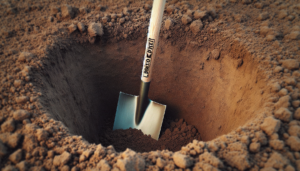
Maintaining proper sanitation and hygiene practices is of utmost importance when it comes to venturing into the wilderness. From minimizing environmental impact to reducing the risk of illness, implementing the best practices for wilderness sanitation and hygiene is crucial for both personal well-being and the preservation of natural ecosystems. In this article, we will explore a range of effective measures that can be taken to ensure optimal sanitation and hygiene in the wilderness, offering valuable insights to outdoor enthusiasts and adventurers alike.
Planning and Preparation
When it comes to wilderness sanitation and hygiene, proper planning and preparation are essential to ensure a clean and safe experience. Here are some important factors to consider:
Choosing the Right Location
Selecting the right location for your wilderness adventure is crucial for sanitation and hygiene. Look for areas that have designated campsites with established facilities. These sites often have accessible toilets, waste disposal methods, and water sources, making it easier to manage sanitation and hygiene.
Securing Permits and Permissions
Before embarking on your wilderness trip, it is crucial to obtain any necessary permits and permissions. Different areas may have specific regulations and restrictions regarding waste disposal and camping. Make sure to research and comply with these guidelines to minimize environmental impact and maintain the cleanliness of the wilderness area.
Assessing Waste Disposal Methods
One of the most critical aspects of wilderness sanitation is proper waste disposal. Familiarize yourself with the different waste disposal methods suitable for the environment you will be in. These methods may include packing out waste, burying solid waste, or using designated toilet facilities. Understanding and practicing the appropriate waste disposal methods will help preserve the pristine nature of the wilderness while keeping you and other campers safe.
Pack and Carry
When preparing for a wilderness trip, it is crucial to pack the necessary hygiene items to ensure you maintain cleanliness throughout your adventure. Here are some essential items to include:
Personal Hygiene Items
Pack personal hygiene items such as toothbrushes, toothpaste, soap, and towels. These items are essential for maintaining general cleanliness and hygiene during your outdoor experience.
Toilet Paper and Wipes
Remember to bring an adequate supply of toilet paper and wipes. These items are crucial for proper hygiene during bathroom breaks. Ensure that you pack them in a way that keeps them dry and easily accessible when needed.
Hand Sanitizer and Soap
Maintaining clean hands is vital for overall hygiene, especially in the wilderness where access to running water may be limited. Carry a sufficient amount of hand sanitizer and soap to ensure you can effectively wash your hands and reduce the risk of bacterial contamination.
Waste Disposal
Proper waste disposal is a fundamental part of practicing good wilderness sanitation and preserving the natural environment. Here are some guidelines for effective waste management:
Choosing a Suitable Method
Depending on the regulations of the area and the availability of facilities, choose a waste disposal method that is appropriate and environmentally friendly. Options may include packing out waste, which involves carrying all trash and waste with you, or utilizing designated toilet facilities.
Pack it Out
If you are in an area without designated waste disposal facilities, it is crucial to pack out your waste. This means carrying all trash, including food scraps, packaging, and personal hygiene products, with you and properly disposing of them in designated waste receptacles when you return to civilization. Remember to bring sealable storage bags or containers to prevent leaks or odors.
Burying Solid Waste
In certain circumstances where packing out waste is not feasible, burying solid waste is an acceptable alternative. Choose a secluded location away from water sources, trails, and campsites. Dig a hole at least six to eight inches deep, deposit the waste, and cover it with soil. Ensure the hole is properly covered, preventing animals from accessing the waste. Burying solid waste reduces the risk of contamination and helps maintain a sanitary environment.
Water Management
Proper water management is crucial for maintaining hydration and hygiene in the wilderness. Consider the following aspects when it comes to water:
Water Sources and Treatment
Identify reliable water sources within the wilderness area. Natural water sources, such as lakes, rivers, and springs, may require treatment before consumption to eliminate harmful microorganisms. Carry water treatment methods such as water purification tablets, filters, or boiling equipment to ensure the safety of the water you consume.
Washing Dishes and Utensils
When washing dishes and utensils, use biodegradable soap or food-safe sanitizing agents to avoid contaminating water sources. Dispose of the wastewater at least 200 feet away from any water bodies to prevent pollution. Utilize a basin or collapsible sink for washing to minimize water usage and maximize efficiency.
Minimizing Water Consumption
Water conservation is essential in the wilderness where water sources may be limited. Minimize water consumption by turning off the tap when not in use, using water sparingly during showers or baths, and considering water-saving methods such as wet wipes for personal hygiene. By practicing water conservation techniques, you can ensure the availability of clean water throughout your wilderness trip.
Food and Cooking Practices
Proper food handling and storage are essential for maintaining good hygiene and preventing foodborne illnesses in the wilderness. Follow these guidelines:
Proper Food Handling
Maintain cleanliness during food preparation by washing your hands before handling any food items. Pack perishable food items in coolers with ice packs to prevent spoilage and cross-contamination. Keep raw meat and produce separate and use separate cutting boards and utensils for different food groups to prevent the spread of bacteria.
Storing and Securing Food
Properly store food items to discourage wildlife interactions and prevent contamination. Utilize bear-resistant containers or bear bags to store food and other scented items. Hang the bags or containers at least ten feet above the ground and four feet away from any tree trunk to deter wildlife. This practice not only protects the wildlife but also maintains a clean and safe campsite.
Cleaning and Disinfecting Cooking Utensils
Maintain cleanliness and reduce the risk of contamination by regularly cleaning and disinfecting cooking utensils. Use biodegradable camp-friendly soap and hot water to clean utensils thoroughly. Alternatively, you can sanitize utensils by boiling them in water for a few minutes. Proper cleaning and disinfection practices ensure that your cooking utensils are safe for use and reduce the risk of foodborne illnesses.
Personal Hygiene
Maintaining personal hygiene is crucial for overall well-being and comfort during your wilderness adventure. Pay attention to the following aspects:
Bathing and Cleaning
While traditional showers may not be available in the wilderness, there are alternative options for maintaining personal cleanliness. Consider using biodegradable soap or wet wipes for regular sponge baths. Utilize natural water sources such as rivers or lakes for bathing if permitted, ensuring that you do not use soap directly in the water to minimize environmental impact.
Toothbrushing and Oral Care
Maintaining oral hygiene is important, even in the wilderness. Carry a travel-sized toothbrush and toothpaste and practice regular toothbrushing. Spit out the toothpaste away from any water sources to avoid polluting them. Consider using environmentally friendly oral hygiene products to minimize the impact on nature.
Menstrual Hygiene
For individuals who menstruate, proper menstrual hygiene is essential for comfort and cleanliness in the wilderness. Carry an adequate supply of menstrual products in sealable bags to prevent leaks and odors. If disposing of used menstrual products, follow the same principles of waste disposal mentioned earlier, either packing them out or burying them in accordance with the regulations and guidelines of the area.
Preventing Contamination
Preventing contamination is essential to maintain a clean and safe campsite and minimize harm to the environment. Follow these practices:
Keeping a Clean Campsite
Maintain a clean campsite by properly disposing of waste, clearing any debris or food scraps, and storing all items securely. Regularly remove any trash or food waste from the campsite to deter wildlife from approaching and prevent the spread of bacteria.
Proper Waste Storage
Ensure all waste, including food scraps and personal hygiene products, is stored securely in designated waste containers or sealed bags. Keep these containers away from your sleeping area to minimize the risk of attracting wildlife.
Avoiding Cross-Contamination
Prevent cross-contamination by using separate utensils, cutting boards, and preparation areas for different food items. Properly wash and sanitize utensils and surfaces after each use to eliminate any potential bacteria from spreading. Following these practices will reduce the risk of foodborne illnesses and maintain a hygienic camp environment.
Wildlife Safety
Maintaining proper wildlife safety practices not only protects the wilderness but also ensures your own safety. Consider the following guidelines:
Storing Food Properly
Prevent wildlife interactions by correctly storing your food and scented items. Utilize bear-resistant containers or hang bear bags as mentioned earlier. By keeping food stored securely, you reduce the allure for wildlife to approach your campsite and minimize the risk of dangerous encounters.
Keeping Campsite Clean
Maintaining a clean campsite is essential for wildlife safety. Regularly clean up any food scraps or leftovers to avoid attracting animals. Dispose of waste properly, following the waste disposal guidelines mentioned earlier, to prevent wildlife from scavenging and disrupting the natural environment.
Good Personal Hygiene
Maintaining good personal hygiene, particularly when it comes to food handling and waste disposal, is crucial for wildlife safety. Clean hands thoroughly with hand sanitizer or soap and water before and after handling food or waste. By practicing good personal hygiene, you minimize the risk of spreading bacteria to wildlife and maintain a safe wilderness environment.
Human Waste Disposal
Proper human waste disposal is essential to minimize environmental impact and maintain a sanitary campsite. Follow these guidelines:
Choosing a Remote Site
Select a remote site away from water sources, campsites, and trails for human waste disposal. This ensures that any waste is properly contained and does not contaminate water sources or areas frequently used by other campers.
Digging a Cathole
To dispose of solid human waste, dig a cathole at least six to eight inches deep and at least 200 feet away from water sources, campsites, and trails. Use a trowel or lightweight shovel to dig the hole, deposit the waste, and cover it with soil. This method isolates the waste and helps prevent the spread of harmful bacteria.
Using Biodegradable Toilet Paper
When using toilet paper, choose biodegradable options to minimize environmental impact. Toilet paper should be placed in the cathole along with the waste and covered with soil. Avoid burning toilet paper, as it can pose fire hazards and leave behind unsightly residue.
Emergency Hygiene
In emergency situations, maintaining proper sanitation and hygiene becomes even more crucial. Consider the following practices:
Emergency Waste Disposal
When facing emergency situations without access to established waste disposal methods, improvise with packing out waste in airtight bags or containers. Store these bags away from your immediate area and dispose of them properly when you have access to the necessary facilities.
Water Purification Methods
In emergencies, where access to treated water is limited, be prepared with water purification methods. Carry water purification tablets, filters, or boiling equipment to ensure the water you consume is safe and free from harmful microorganisms.
Personal Hygiene in Emergency Situations
In emergency situations, maintaining personal hygiene may become challenging. However, it is essential to prioritize cleanliness to prevent the spread of bacteria and maintain personal comfort. Utilize wet wipes, hand sanitizer, or alternative bathing methods to maintain hygiene when traditional facilities are not available.
In conclusion, practicing proper wilderness sanitation and hygiene is crucial for both personal well-being and environmental preservation. By carefully planning and preparing for your trip, choosing suitable waste disposal methods, managing water effectively, handling food safely, maintaining personal hygiene, preventing contamination, prioritizing wildlife safety, and following proper human waste disposal procedures, you can ensure a clean and sanitary wilderness experience. By adhering to these best practices, you can protect the natural environment, minimize the risk of illnesses, and foster a positive outdoor experience for yourself and fellow campers.






